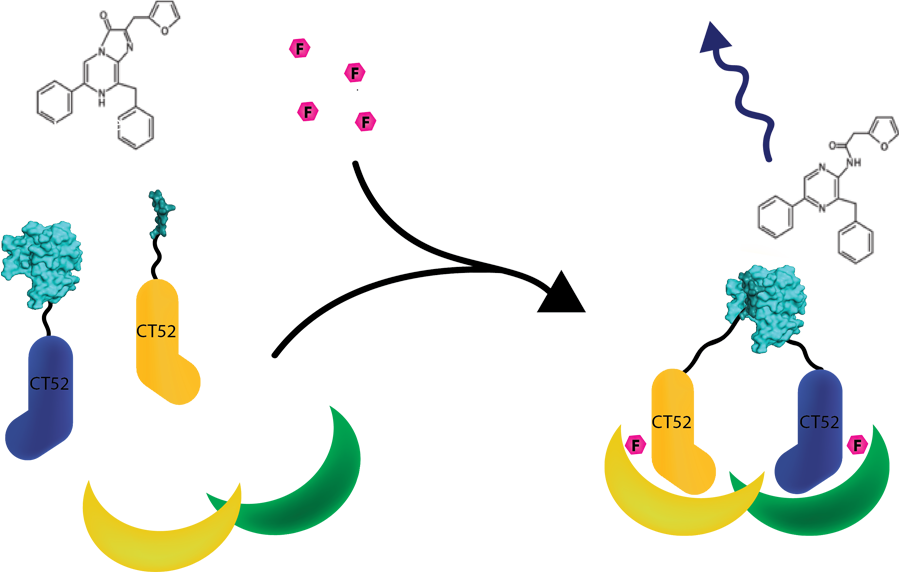Difference between revisions of "Part:BBa K2065002:Experience"
LauraRijns (Talk | contribs) |
Tjvsonsbeek (Talk | contribs) (→iGEM TU Eindhoven 2016) |
||
| (4 intermediate revisions by the same user not shown) | |||
| Line 2: | Line 2: | ||
__NOTOC__ | __NOTOC__ | ||
===Applications of BBa_K2065002=== | ===Applications of BBa_K2065002=== | ||
| − | + | ||
| + | ==iGEM TU Eindhoven 2016== | ||
| + | iGEM TU Eindhoven created this scaffold protein by computational design and checked its functioning and orthogonality using the NanoBiT reporter system. This system was linked to CT52 (CT52-SmallBiT"https://parts.igem.org/Part:BBa_K2065000" and CT52-LargeBiT"https://parts.igem.org/Part:BBa_K2065007") These two proteins could dimerize on our heterodimeric T-14-3-3 scaffold proteins with mutation which were designed by our team. When dimerized the functional luciferase protein was formed. This protein showed luminescence at 460 nm. Thus this system was used as a read out method for T14-3-3 heterodimers. This system is schematically visualised in figure 1. For more detailed information about the application of CT52-SmallBiT visit our wiki for all results of this heterodimer. "http://2016.igem.org/Team:TU-Eindhoven/Results" | ||
| + | |||
| + | [[File:T--TU-Eindhoven--NanolUcreadoutbb.png]] | ||
| + | <br> | ||
| + | ''Figure 1: Measurement system for T14-3-3 heterodimers using the NanoBiT system linked to CT52'' | ||
===User Reviews=== | ===User Reviews=== | ||
Latest revision as of 00:43, 19 October 2016
Applications of BBa_K2065002
iGEM TU Eindhoven 2016
iGEM TU Eindhoven created this scaffold protein by computational design and checked its functioning and orthogonality using the NanoBiT reporter system. This system was linked to CT52 (CT52-SmallBiT"https://parts.igem.org/Part:BBa_K2065000" and CT52-LargeBiT"https://parts.igem.org/Part:BBa_K2065007") These two proteins could dimerize on our heterodimeric T-14-3-3 scaffold proteins with mutation which were designed by our team. When dimerized the functional luciferase protein was formed. This protein showed luminescence at 460 nm. Thus this system was used as a read out method for T14-3-3 heterodimers. This system is schematically visualised in figure 1. For more detailed information about the application of CT52-SmallBiT visit our wiki for all results of this heterodimer. "http://2016.igem.org/Team:TU-Eindhoven/Results"

Figure 1: Measurement system for T14-3-3 heterodimers using the NanoBiT system linked to CT52
User Reviews
UNIQ548ed8f44c7dbf8a-partinfo-00000000-QINU UNIQ548ed8f44c7dbf8a-partinfo-00000001-QINU
